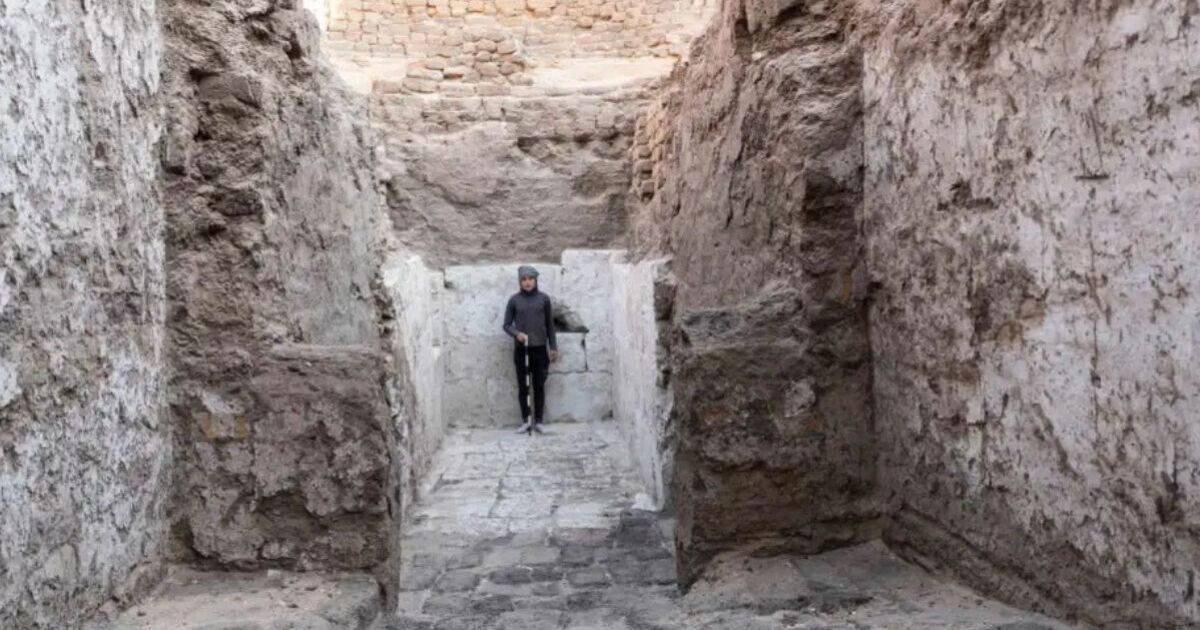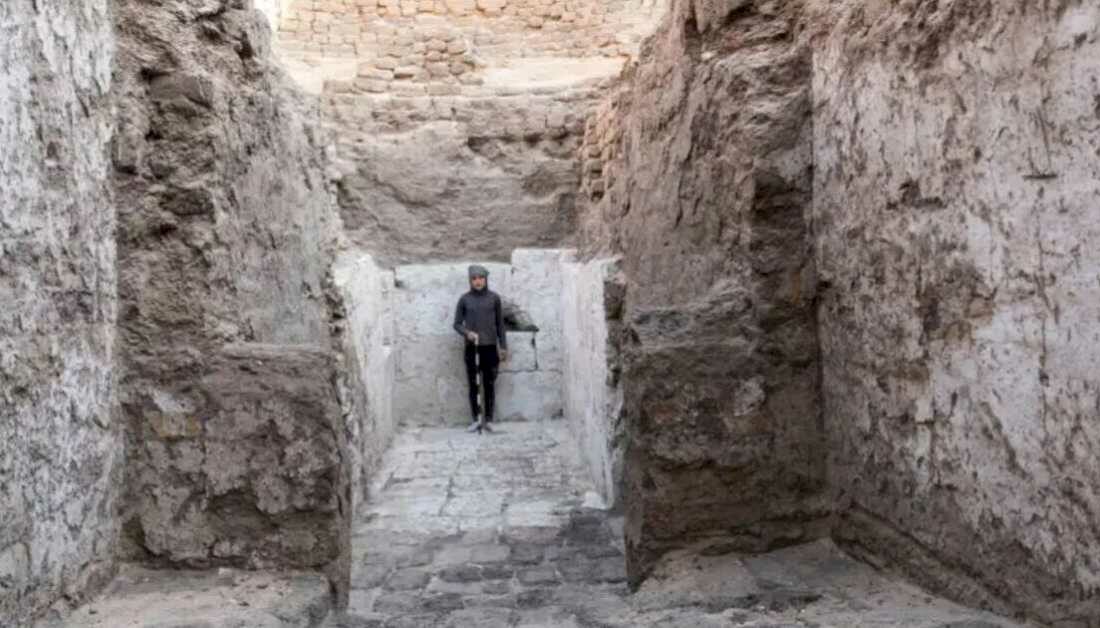
A huge tomb belonging to one of ancient Egypt’s earliest pharaohs has been discovered by archaeologists. However, the identity of the king is unknown as there was no mummy left inside the 3600-year-old tomb.
The burial site was discovered by a joint Egyptian-American archaeological team nearly 23ft underground in the Mount Anubis necropolis in Abydos. It features several rooms, 16ft vaults made of mud bricks and pottery. Archaeologists found paintings of the goddess Isis and her sister Nephthys at the entrance to the site. These scenes are commonly associated with funerary rituals.
There were also undecipherable remnants of hieroglyphic markings identifying the royal ruler, leaving the experts puzzled. The tomb has also been looted and badly damaged, making it even harder for them to identify its owner.
Kathryn Howley, an archaeologist at the Institute of Fine Arts at New York University, said: “We don’t have a huge amount of source material to work with, and that’s why a new discovery like this is so exciting.”
The tomb belongs to a member of the Abydos dynasty who ruled over 3,000 years ago. Experts believe its most likely owner is either of the ancient pharaohs Senaiib and Paentjeni – both have monuments elsewhere but no tombs.
Although the Abydos dynasty is thought to have ruled a region around the city rather than the whole of Egypt, the site’s grandeur has left experts wondering whether they were more powerful than first thought.
It comes after the tomb of King Thutmose II, the fourth Pharaoh of Egypt’s 18th Dynasty, was found earlier this year. The long-lost site was discovered near a vast burial ground called The Valley of the Kings in Luxor, Egypt.
The king, who died at the age of 30, is believed to have reigned from around 1493 BC to 1479 BC. He was married to Queen Hatshepsut, who made history as a powerful female pharaoh.
Prior to the discovery of King Thutmose II in February, the last royal tomb to be discovered was Tutankhamen, which was over 100 years ago. An English archaeologist found it in the Valley of the Kings in November 1922.

